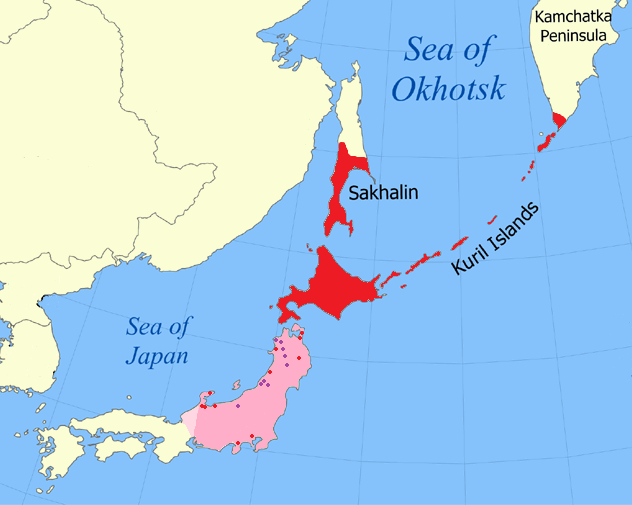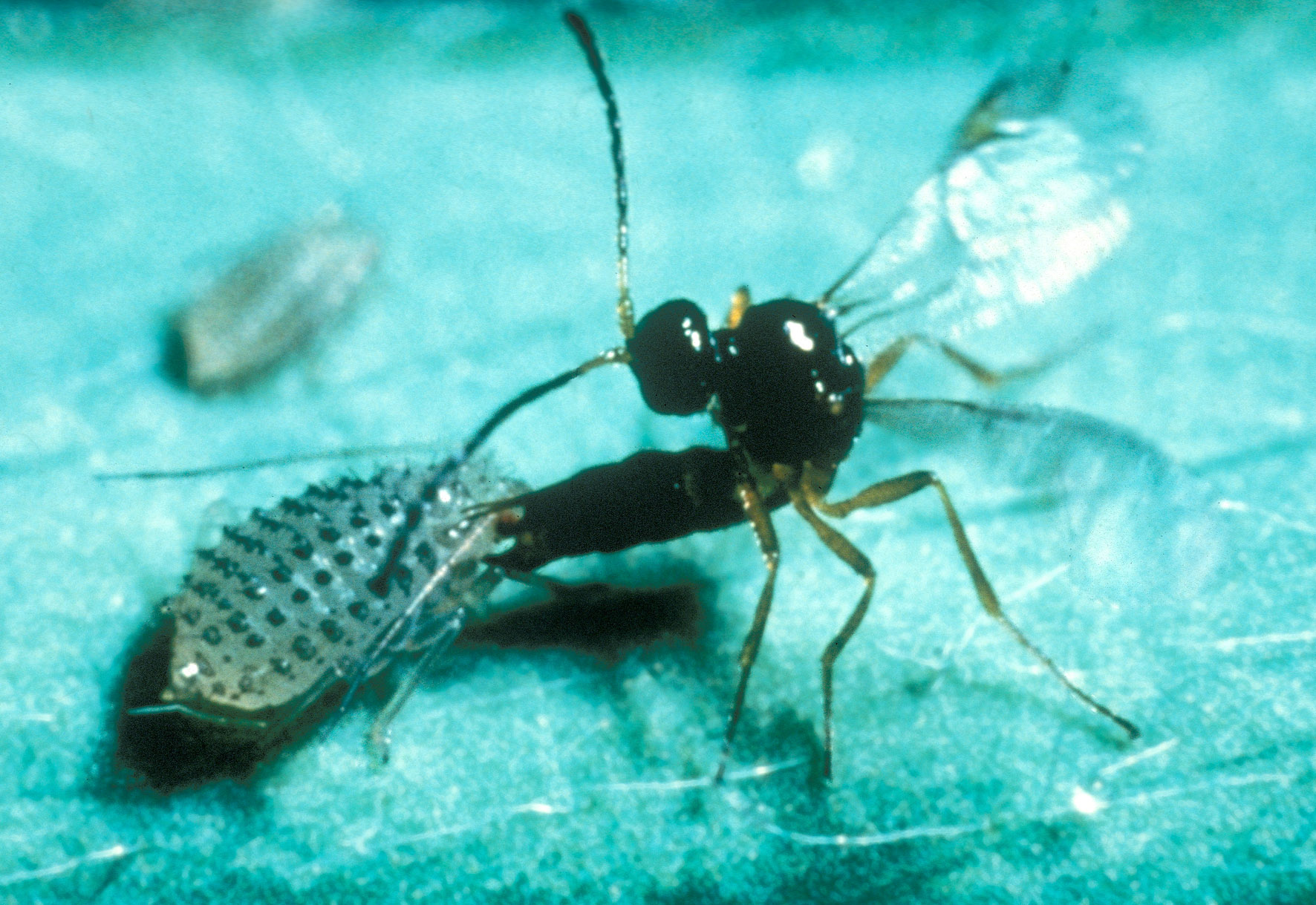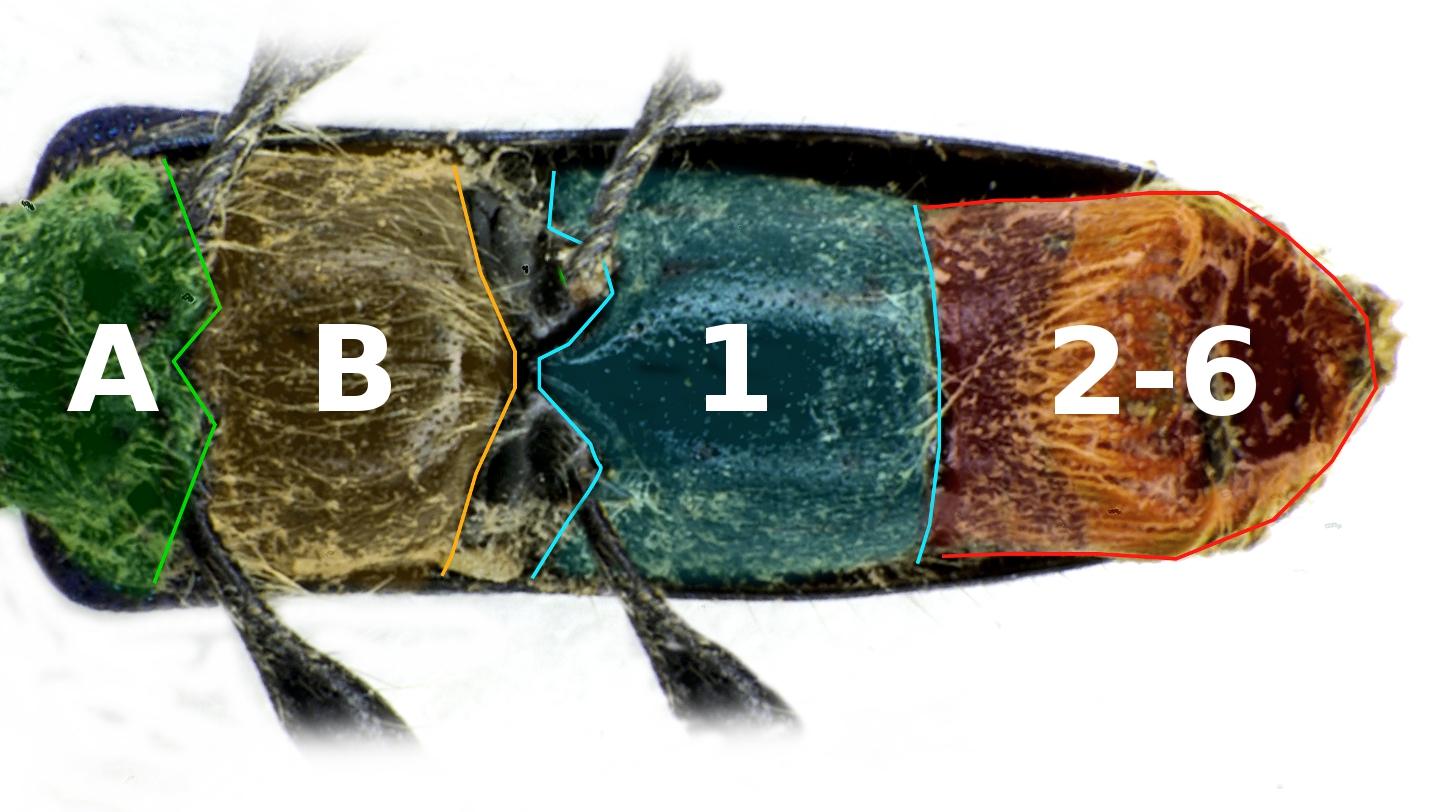|
Scolytus Jacobsoni
''Scolytus jacobsoni'' is an elm bark beetle occurring in forests of mixed broad-leaves with elm trees in Asia. In southeastern Russia, during years of outbreaks ''S. jacobsoni'' often attacks healthy trees along forest edges or standing alone along roads and in fields and gardens, making it an important pest for elm trees there. Reported hosts include ''Ulmus davidiana'', '' Ulmus japonica'', ''Ulmus laciniata'', '' Ulmus propinqua'', ''Carpinus betulus'', and ''Pyrus ussuriensis''. Description Body length is 3–5 mm long. The general color is dark-brown and shining, with lighter legs, elytra and antennae. The forehead of males is depressed and red hair covers its edges, which are curled toward the middle of the forehead. Female forehead is convex, bearing a medium longitudinal groove. Longitudinal wrinkle near the mouth and vertex punctured in both sexes. The pronotum is somewhat longer than wide (7:6 ratio). It is covered with coarse punctures that are larger at the ed ... [...More Info...] [...Related Items...] OR: [Wikipedia] [Google] [Baidu] |
Ulmus Davidiana
''Ulmus davidiana'', also known as the David elm, or Father David elm, is a small deciduous tree widely distributed across China, Mongolia, Korea, Siberia, and Japan, where it is found in wetlands along streams at elevations of 2000–2300 m (6,500–7,500 ft).Fu, L., Xin, Y. & Whittemore, A. (2002). Ulmaceae, in Wu, Z. & Raven, P. (eds) ''Flora of China'', Vol. 5 (Ulmaceae through Basellaceae). Science Press, Beijing, and Missouri Botanical Garden Press, St. Louis, USA/ref> The tree was first described in 1873 from the hills north of Beijing, China. Classification Two varieties of ''Ulmus davidiana'' are recognized: var. ''davidiana'', occurring only in China, and var. ''japonica'' Rehder, the more widely ranging Japanese Elm. Description ''Ulmus davidiana'' is considered to have a remarkable resemblance to the American elm (''U. americana'') in all but ultimate size.Ware, G. (1995). Little-known elms from China: landscape tree possibilities. ''Journal of Arbori ... [...More Info...] [...Related Items...] OR: [Wikipedia] [Google] [Baidu] |
Chalcidoidea
Chalcid wasps (, , for their metallic colour) are insects within the superfamily Chalcidoidea, part of the order Hymenoptera. The superfamily contains some 22,500 known species, and an estimated total diversity of more than 500,000 species, meaning the vast majority have yet to be discovered and described. The name "chalcid" is often confused with the name "chalcidid", though the latter refers strictly to one constituent family, the Chalcididae, rather than the superfamily as a whole; accordingly, most recent publications (e.g.,) use the name "chalcidoid" when referring to members of the superfamily. Most chalcid wasps are parasitoids of other insects, though other life styles are known, with the herbivorous fig wasps acting as pollinators. Various species are used as biological pest control agents or in scientific research. Description Chalcidoids are generally small wasps, averaging 1.5 mm in length and usually being less than 3 mm. The body is often metallic in colour ... [...More Info...] [...Related Items...] OR: [Wikipedia] [Google] [Baidu] |
Scolytinae
A bark beetle is the common name for the subfamily of beetles Scolytinae. Previously, this was considered a distinct family (Scolytidae), but is now understood to be a specialized clade of the "true weevil" family ( Curculionidae). Although the term "bark beetle" refers to the fact that many species feed in the inner bark (phloem) layer of trees, the subfamily also has many species with other lifestyles, including some that bore into wood, feed in fruit and seeds, or tunnel into herbaceous plants. Well-known species are members of the type genus '' Scolytus'', namely the European elm bark beetle ''S. multistriatus'' and the large elm bark beetle ''S. scolytus'', which like the American elm bark beetle '' Hylurgopinus rufipes'', transmit Dutch elm disease fungi (''Ophiostoma''). The mountain pine beetle ''Dendroctonus ponderosae'', southern pine beetle '' Dendroctonus frontalis'', and their near relatives are major pests of conifer forests in North America. A similarly aggressi ... [...More Info...] [...Related Items...] OR: [Wikipedia] [Google] [Baidu] |
Scolytus Multistriatus
''Scolytus multistriatus'', the European elm bark beetle or smaller European elm bark beetle, is a bark beetle species in the genus '' Scolytus''. In Europe, while ''S. multistriatus'' acts as vector of the Dutch elm disease, caused by the Ascomycota Ascomycota is a phylum of the kingdom Fungi that, together with the Basidiomycota, forms the subkingdom Dikarya. Its members are commonly known as the sac fungi or ascomycetes. It is the largest phylum of Fungi, with over 64,000 species. The def ... '' Ophiostoma ulmi'', it is much less effective than the large elm bark beetle, '' S. scolytus''. ''S. multistriatus'' uses vanillin and syringaldehyde as signals to find a host tree during oviposition.Vanillin and Syringaldehyde as Attractants for ''Scolytus multistriatus'' (Coleoptera: Scolytidae). Meyer H.J. and Norris D.M., Annals of the Entomological Society of America, 17 July 1967, Volume 60, Number 4, pages 858-859,abstract File:01a Scolytus multistriatus Imago 40fach.jpg ... [...More Info...] [...Related Items...] OR: [Wikipedia] [Google] [Baidu] |
Liaoning
Liaoning () is a coastal province in Northeast China that is the smallest, southernmost, and most populous province in the region. With its capital at Shenyang, it is located on the northern shore of the Yellow Sea, and is the northernmost coastal province of the People's Republic of China. Historically a gateway between China proper and Manchuria, the modern Liaoning province was established in 1907 as Fengtian or Fengtien province and was renamed Liaoning in 1929. It was also known at that time as Mukden Province for the Manchu name of ''Shengjing'', the former name of Shenyang. Under the Japanese-puppet Manchukuo regime, the province reverted to its 1907 name, but the name Liaoning was restored for a brief time in 1945 and then again in 1954. Liaoning borders the Yellow Sea (Korea Bay) and Bohai Sea in the south, North Korea's North Pyongan and Chagang provinces in the southeast, Jilin to the northeast, Hebei to the southwest, and Inner Mongolia to the northw ... [...More Info...] [...Related Items...] OR: [Wikipedia] [Google] [Baidu] |
Heilongjiang
Heilongjiang () formerly romanized as Heilungkiang, is a province in northeast China. The standard one-character abbreviation for the province is (). It was formerly romanized as "Heilungkiang". It is the northernmost and easternmost province of the country and contains China's northernmost point (in Mohe City along the Amur) and easternmost point (at the junction of the Amur and Ussuri rivers). The province is bordered by Jilin to the south and Inner Mongolia to the west. It also shares a border with Russia (Amur Oblast, Jewish Autonomous Oblast, Khabarovsk Krai, Primorsky Krai and Zabaykalsky Krai) to the north and east. The capital and the largest city of the province is Harbin. Among Chinese provincial-level administrative divisions, Heilongjiang is the sixth-largest by total area, the 15th-most populous, and the second-poorest by GDP per capita. The province takes its name from the Amur River (see the etymology section below for details) which marks the border ... [...More Info...] [...Related Items...] OR: [Wikipedia] [Google] [Baidu] |
Sakhalin
Sakhalin ( rus, Сахали́н, r=Sakhalín, p=səxɐˈlʲin; ja, 樺太 ''Karafuto''; zh, c=, p=Kùyèdǎo, s=库页岛, t=庫頁島; Manchu: ᠰᠠᡥᠠᠯᡳᠶᠠᠨ, ''Sahaliyan''; Orok: Бугата на̄, ''Bugata nā''; Nivkh: Yh-mif) is the largest island of Russia. It is north of the Japanese archipelago, and is administered as part of the Sakhalin Oblast. Sakhalin is situated in the Pacific Ocean, sandwiched between the Sea of Okhotsk to the east and the Sea of Japan to the west. It is located just off Khabarovsk Krai, and is north of Hokkaido in Japan. The island has a population of roughly 500,000, the majority of which are Russians. The indigenous peoples of the island are the Ainu, Oroks, and Nivkhs, who are now present in very small numbers. The Island's name is derived from the Manchu word ''Sahaliyan'' (ᠰᠠᡥᠠᠯᡳᠶᠠᠨ). Sakhalin was once part of China during the Qing dynasty, although Chinese control was relaxed at times. Sakhalin ... [...More Info...] [...Related Items...] OR: [Wikipedia] [Google] [Baidu] |
Primorsky Krai
Primorsky Krai (russian: Приморский край, r=Primorsky kray, p=prʲɪˈmorskʲɪj kraj), informally known as Primorye (, ), is a federal subject (a krai) of Russia, located in the Far East region of the country and is a part of the Far Eastern Federal District. The city of Vladivostok is the administrative center of the krai, and the second largest city in the Russian Far East, after Khabarovsk. The krai has the largest economy among the federal subjects in the Russian Far East, and a population of 1,956,497 as of the 2010 Census. The krai shares Russia's only border with North Korea, along the Tumen River in Khasansky District in the southwestern corner of the krai. Peter the Great Gulf, the largest gulf in the Sea of Japan, is located along the south coast. Historically part of Manchuria, Primorsky Krai was ceded to the Russian Empire by Qing China in 1860 as part of a region known as Outer Manchuria, forming most of the territory of Primorskay ... [...More Info...] [...Related Items...] OR: [Wikipedia] [Google] [Baidu] |
Parasitoid
In evolutionary ecology, a parasitoid is an organism that lives in close association with its host (biology), host at the host's expense, eventually resulting in the death of the host. Parasitoidism is one of six major evolutionarily stable strategy, evolutionary strategies within parasitism, distinguished by the fatal prognosis for the host, which makes the strategy close to predation. Among parasitoids, strategies range from living inside the host (''endoparasitism''), allowing it to continue growing before emerging as an adult, to Paralysis, paralysing the host and living outside it (''ectoparasitism''). Hosts can include other parasitoids, resulting in hyperparasitism; in the case of oak galls, up to five levels of parasitism are possible. Some parasitoids Behavior-altering parasite, influence their host's behaviour in ways that favour the propagation of the parasitoid. Parasitoids are found in a variety of Taxon, taxa across the insect superorder Endopterygota, whose compl ... [...More Info...] [...Related Items...] OR: [Wikipedia] [Google] [Baidu] |
Scolytus
''Scolytus'' is a genus of bark beetles (subfamily Scolytinae). It includes several species notorious for destroying trees in the forests. The Dutch elm disease is spread in North America by two species : the native elm bark beetle, ''Hylurgopinus rufipes'', and the European elm bark beetle, '' Scolytus multistriatus''. In Europe, while the aforementioned '' Scolytus multistriatus'' again acts as vector for infection, it is much less effective than the large elm bark beetle '' Scolytus scolytus''. Species Species include: *'' Scolytus amygdali'' Guerin, 1847, the almond bark beetle *''Scolytus dentatus'' Bright, 1964 *''Scolytus fagi'' Walsh, 1867 *'' Scolytus jacobsoni'' Spessivtzev, 1919 *''Scolytus laricis'' Blackman, 1934, the larch engraver *''Scolytus mali'' ( Bechstein, 1805), the larger shothole borer *'' Scolytus monticolae'' Swaine, 1917 *'' Scolytus multistriatus'' (Marsham, 1802), the European elm bark beetle, smaller European elm bark beetle *'' Scolytus muticus ... [...More Info...] [...Related Items...] OR: [Wikipedia] [Google] [Baidu] |
Ulmus Japonica
''Ulmus davidiana'' var. ''japonica'', the Japanese elm, is one of the larger and more graceful Asiatic elms, endemic to much of continental northeast Asia and Japan, where it grows in swamp forest on young alluvial soils, although much of this habitat has now been lost to intensive rice cultivation.Makita, H., Miyagi, T., Miura, O., and Kikuchi, T. (1979). A study of an alder forest and an elm forest with special reference to their geomorphological conditions in a small tributary basin. In: Vegetation und Lansdschaft Japans. ''Bull: Yokohama Phytosoc. Soc. Japan'' 16, 1979 Description The size and shape of the Japanese elm is extremely variable, ranging from short and bearing a densely branched broad crown similar to the Wych elm to tall, single-stemmed, with narrow crown similar to the English elm. Augustine Henry described one of the latter outside Iwamigawa, Hokkaido, railway station as being 34 m tall, with a clean stem to a height of approximately 15 m.Elwes, H. J. & ... [...More Info...] [...Related Items...] OR: [Wikipedia] [Google] [Baidu] |
Sternum (arthropod Anatomy)
The sternum (pl. "sterna") is the ventral portion of a segment of an arthropod thorax or abdomen. In insects, the sterna are usually single, large sclerites, and external. However, they can sometimes be divided in two or more, in which case the subunits are called sternites, and may also be modified on the terminal abdominal segments so as to form part of the functional genitalia, in which case they are frequently reduced in size and development, and may become internalized and/or membranous. For a detailed explanation of the terminology, see Kinorhynchs have tergal and sternal plates too, though seemingly not homologous with those of arthropods.Sørensen, M. V. et al. Phylogeny of Kinorhyncha based on morphology and two molecular loci. PLoS One 10, 1–33 (2015). Ventrites are externally visible sternites. Usually the first sternite is covered up, so that vertrite numbers do not correspond to sternid numbers. The term is also used in other arthropod groups such as crustacea ... [...More Info...] [...Related Items...] OR: [Wikipedia] [Google] [Baidu] |





